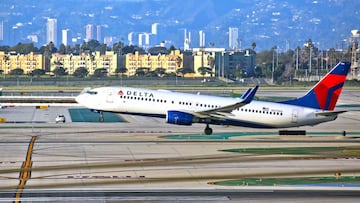How common are airplane engine ingestion fatalities? Two airport workers killed in 2023
Since December, two airport workers have been tragically killed in jet engine accidents. A look into these accidents and the dangers posed by the profession.


Last Friday, a worker at the San Antonio Airport in Texas was killed after being pulled into a jet engine. The event is the second of this nature to take place this year, sparking outrage within the aviation sector that worker safety is deteriorating. The aircraft ramp worker, who has yet to be named, was employed by Unifi, a company contracted by Delta to manage operations on the tarmac. The fatal accident occurred just before 10:30 p.m. when an inbound plane from Los Angles landed at the Texas airport, and while being taxied to the gate, the aircraft ingested the worker into the engine.
Airport worker killed after being ingested into a Delta Air Lines A319 engine at San Antonio International Airport. pic.twitter.com/rAFpOzDLWy
— Breaking Aviation News & Videos (@aviationbrk) June 25, 2023
Dangers for workers in the aviation industry
Across the aviation industry, workers face various risks. Flight crews such as pilots, navigators, and flight attendants are at risk of mechanical failure. Groundworkers face significant dangers like the two who have died in recent months. These workers are often unprotected while working around massive airplanes as they navigate tight corners while taxiing between the gates and runway.
According to the Bureau of Labor Statistics (BLS), between 2011 and 2021, nearly three hundred workers in the Air Transportation sector died on the job. The data from the BLS is not so detailed as to identify the specific number killed after being ‘ingested’ into a jet engine. What is known is that these events are rare, making the fact that two have occurred in less than one year a cause for concern. The most recent analysis, which was not a complete census, was conducted by Boeing in 2008, where researchers found that since 1969, thirty-seven people had been sucked into Boeing 737-100/-200 or 737-300/-400/-500 and Next-Generation 737 airplane jet engines.
OSHA finds that the fatality in Alabama could have been prevented
In December 2022, a baggage handler employed by Piedmont Airlines passed away at Montgomery Regional Airport in Alabama. The airline had been contracted by American Airlines to handle several small regional flights at that airport. Just days before tragedy struck again in Texas, the Department of Labor’s Occupational Safety and Health Administration fined Piedmont Airlines a measly $15,625 for failing to protect the worker who died. Jose A. Gonzales, the OSHA Area Director, said that “proper training and enforcement of safety procedures could have prevented this tragedy,” adding that even for “routine” tasks, “safety measures must be in place.”
Related stories
After the most recent accident, the National Transportation Safety Board provided a statement to NPR, stating that the agency is examining the situation, but did not confirm if a formal investigation had been opened.
Both workers killed were employed by airline contractors
It is important to conduct thorough investigations to determine if airline contractors are compromising safety standards for the sake of cutting costs. When an airline chooses to contract out certain operations, it is typically because it is more economical. However, it is essential for authorities to closely examine whether these contractors are neglecting their responsibilities to maintain a safe working environment in order to save airlines money.
